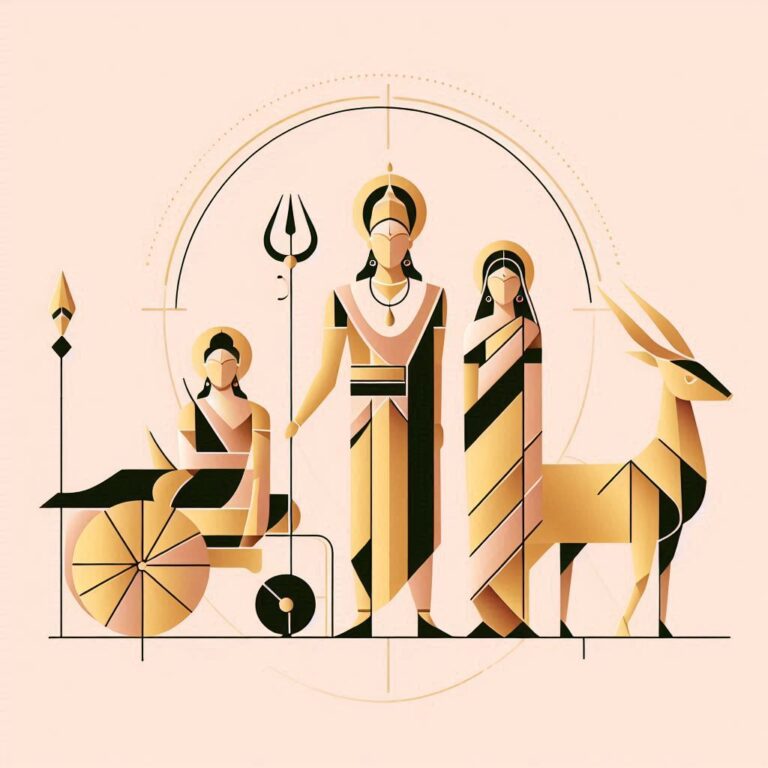Sita’s Role and Qualities: A Comprehensive Analysis of Strength
The Strength and Virtues of Sita: A Deep Dive
When you think about epic stories, one name that often stands out is Sita from the ancient Hindu epic, the Ramayana. But really, who is Sita? And why does her story hold such important lessons for us today? In this article, we’re going to explore Sita’s role, her qualities, and the unique impact she has left on the cultural psyche over the millennia. Pull up a chair and grab your favorite cup of chai; let’s unravel the beautiful, complex weave of Sita’s character.
Who is Sita?
Sita is not just a character in a story; she embodies the essence of womanhood and virtue. As the wife of Lord Rama, the seventh avatar of Lord Vishnu, Sita is a central figure in the Ramayana. Born in the royal lineage of King Janaka, she is often seen as the epitome of patience, fidelity, resilience, and strength. But what does this really mean in the context of her story?
Sita: A Symbol of Courage
One of the striking things about Sita is her courage. Imagine being abducted and taken to a foreign land; your heart would likely race with fear. But Sita stands tall. She resists Ravana’s advances, showing immense strength of character.
Sholakas of Strength
To understand her spirit better, consider these Sholakas:
साध्वी धर्मपत्नी च धर्मपत्नी च वर प्रसादात्।
रामोऽयं सदा भक्तोऽस्मिन स्नेहेन चिरज्यताम्॥
(Sādhvī dharmapatnī ca dharmapatnī ca vara prasādat,
Rāmo’yaṃ sadā bhakto’smin snehena cirajyatām)
“The virtuous wife, blessed by Dharma, may Rama always remain devoted to her in love.”
This verse encapsulates Sita’s virtues and underscores her role as a devoted partner.
Her Patience and Resolve
Sita’s endurance during her time in captivity is nothing short of inspirational. Every day, she faced challenges yet remained unwavering in her commitment to Rama. Her longing for her husband was not only a reflection of loyalty but also a testament to her inner strength.
An Insightful Doha
अहं चित् तू मम।
जनक पुत्री सुर निरंतर॥
(Ahaṃ cit tū mama,
Janaka putrī sura niantara)
“I am indeed yours, the daughter of Janaka, an angel of the heavens.”
This Doha expresses not only her commitment but also her divine nature as a person forged in trials yet remaining true to herself.
Sita’s Qualities: The Ideal Woman
Isn’t it interesting how qualities can be reflected through actions? Sita embodies several key qualities:
-
Devotion: Absolute loyalty to Rama, even in his absence.
-
Compassion: Understanding and forgiving even her captors.
-
Resilience: Facing trials without losing the essence of who she is.
The Divine Play
In many cultures, the woman’s role often rests on her relationship with the family. Sita encapsulates not just fidelity but also the immense respect for those around her, including her in-laws and friends.
Another Sholaka for Reflection
यत्र नार्यस्तु पूज्यन्ते रमन्ते तत्र देवताः।
(Yatra nāryastu pūjyante ramante tatra devatāḥ)
“Where women are honored, there the gods are pleased.”
This beautiful Sholaka summarizes the respect that Sita brings to womanhood, showing that her virtues resonate beyond just the narrative.
Role in the Ramayana
In the context of the Ramayana, Sita is not merely a pawn in a narrative; she stands as a driving force. Her abduction and subsequent rescue aren’t just adventures; they symbolize a fight against tyranny and injustice.
Sita: The Bridge
Sita serves as a bridge between individual love and duty. When she resolves to undergo the trial by fire (Agni Pariksha) to prove her purity, her act is both a show of strength and a reflection of societal norms of her time.
The Cultural Impact of Sita
You might ask yourself, why does Sita matter? Her story defines ideals of womanhood, not solely in an Indian context but universally.
-
Role Model: For countless generations, women have found strength in Sita’s character.
-
Symbol of Ideal Love: Sita’s unwavering love for Rama serves as a metaphor for the deep emotional bonds we cherish in relationships.
Relatable Doha
प्रणवायं सदा हृदयं कुर्वन्ति सर्वे सुखं।
सीता रामस्य मेधा रूपा प्रज्ञा च सुखान्विता॥
(Praṇavāyaṃ sadā hṛdayaṃ kurvanti sarve sukhaṃ,
Sītā rāmasya medhā rūpā prajñā ca sukhānvitā)
“Having formed the heart, they cultivate always happiness; Sita beams with wisdom and beauty.”
The Modern Perspective
In today’s context, discussions around gender dynamics often bring Sita to the forefront. She is not just a figure from the past; her principles echo in the conversations of equality and respect for women today. Isn’t it amazing how ancient wisdom can speak volumes in modern settings?
Reflecting on Modern Issues
In societies where women face oppression, looking towards Sita’s resilience can inspire and empower. How can we learn from her strength to foster a culture of respect for women and their choices today?
Conclusion: Sita’s Timeless Legacy
Sita is far more than a character in an epic. She’s an embodiment of strength, compassion, and courage. Her qualities resonate deeply with our values and ideals, showing us what it means to stand firm in difficult circumstances. As we delve into her story, we realize that Sita isn’t confined to the pages of the Ramayana; she lives within us and guides us as we navigate our complex human experiences.
FAQs
-
Why is Sita considered an ideal woman?
Sita embodies qualities like devotion, patience, and resilience, making her a role model for many women. -
How does Sita’s story relate to modern women?
Sita represents empowerment, showing that women can overcome challenges while maintaining their values. -
What role does Sita play in the Ramayana?
Sita serves as both a catalyst for the narrative and a symbol of love, loyalty, and moral integrity.
-
Are there any teachings from Sita applicable today?
Yes! Her strength in adversity and commitment to her values are lessons that resonate in modern contexts around gender equality and resilience. -
Can Sita’s challenges relate to societal issues today?
Absolutely! Her struggles can provide insights into the challenges women face in today’s world, allowing us to reflect on and champion change.

Let’s carry forward her legacy of strength and wisdom into the world, making sure we honor not just her story but what she represents for future generations.







